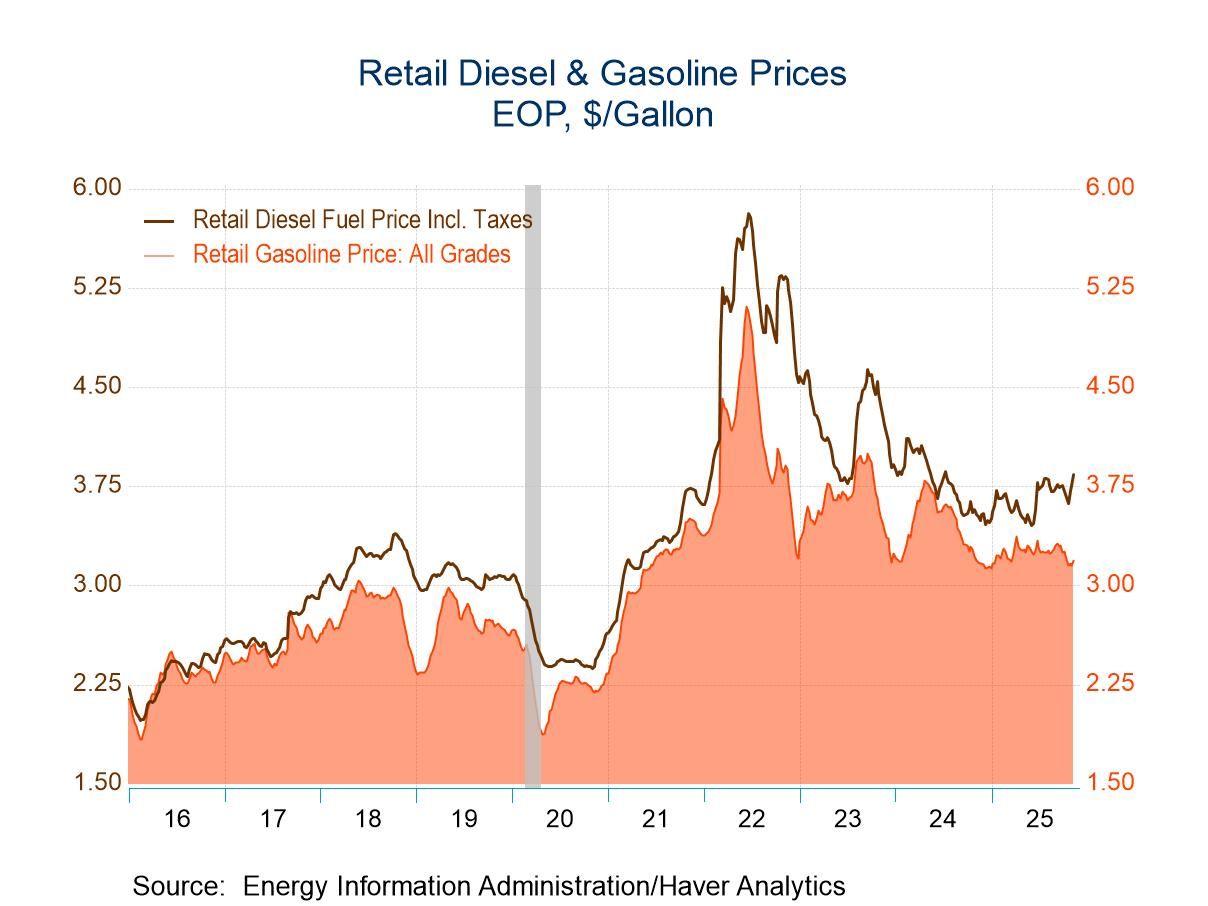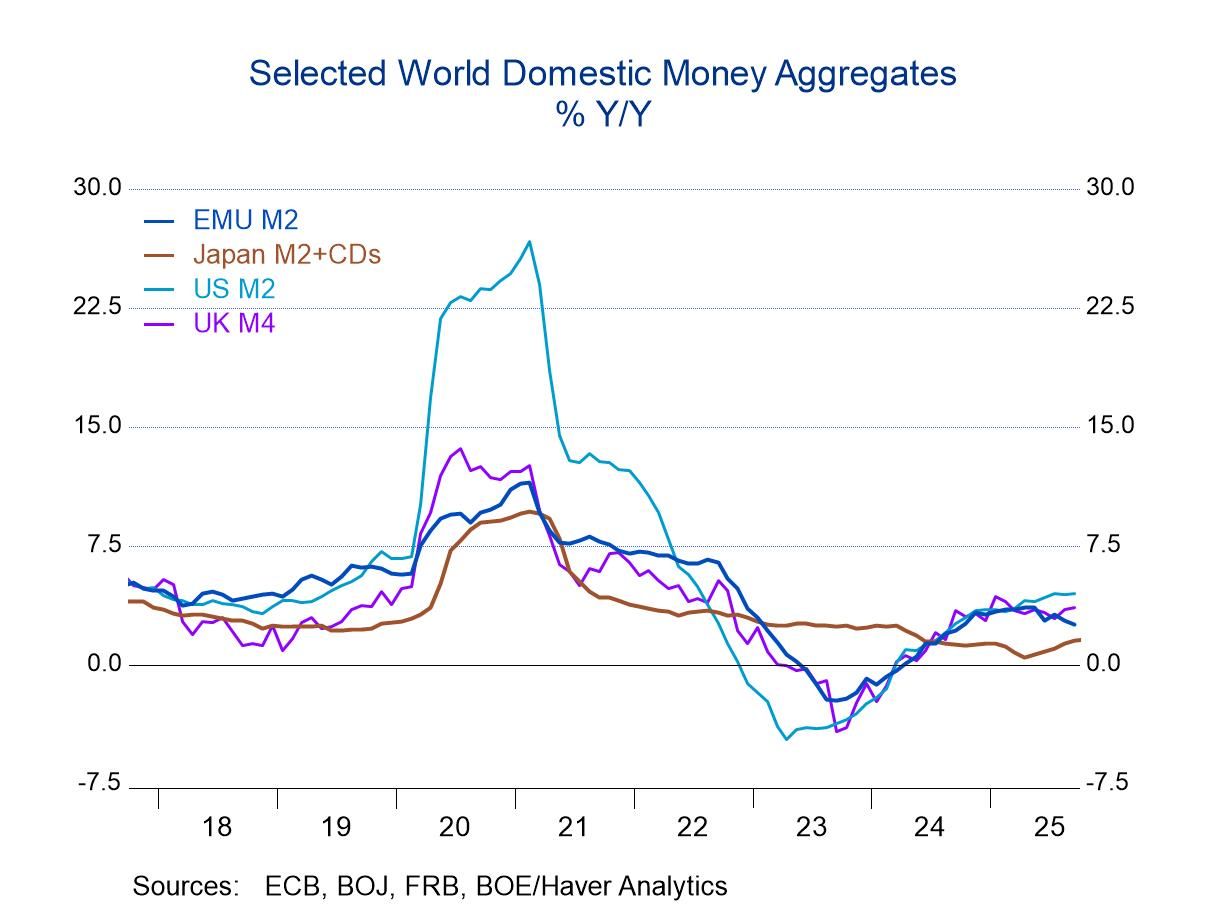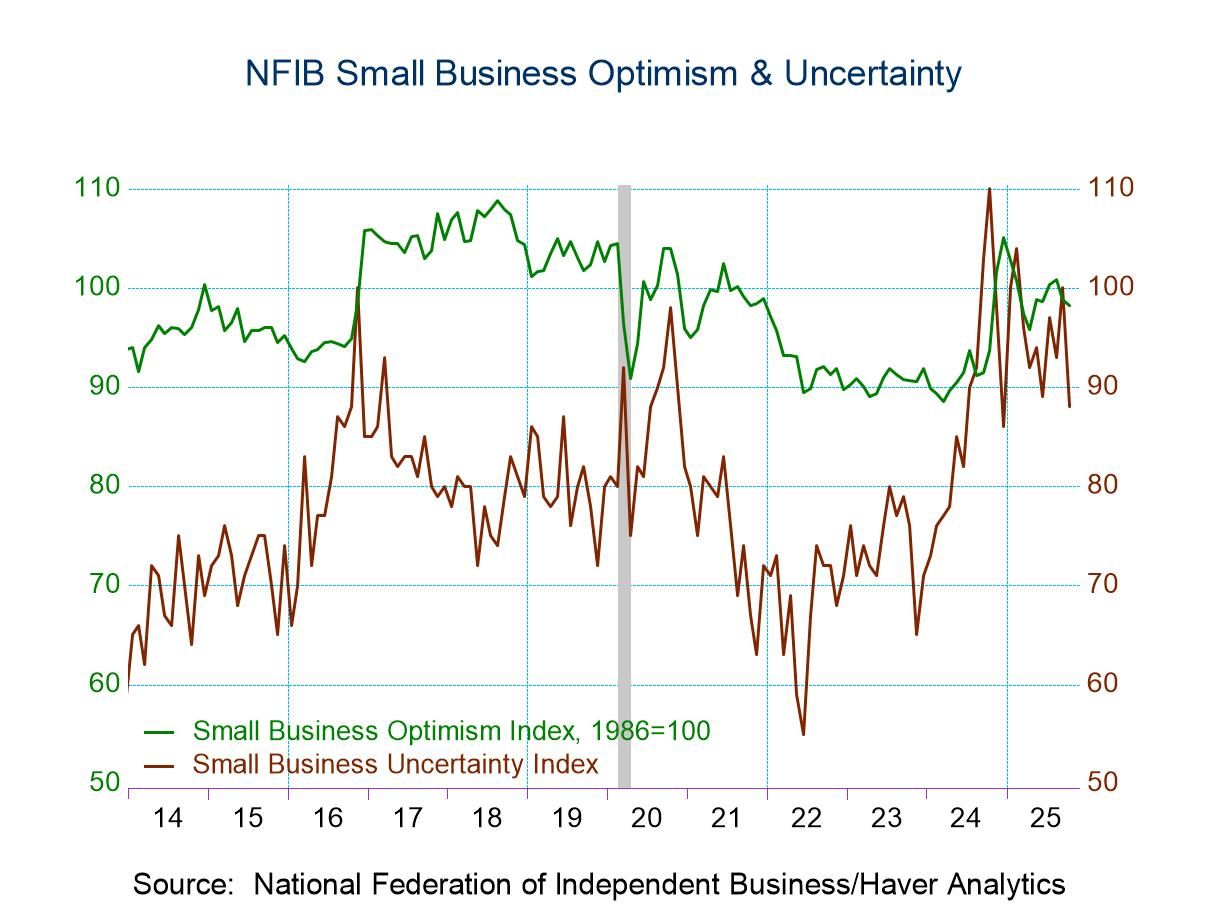 Global| Jun 10 2015
Global| Jun 10 2015U.S. Mortgage Loan Applications Improve; Rates Reach November High
by:Tom Moeller
|in:Economy in Brief
Summary
The Mortgage Bankers Association reported that its total Mortgage Market Volume Index rebounded 8.4% last week (4.3% y/y) following several weeks of decline. Purchase applications increased 9.7% (14.8% y/y). Applications to refinance [...]
The Mortgage Bankers Association reported that its total Mortgage Market Volume Index rebounded 8.4% last week (4.3% y/y) following several weeks of decline. Purchase applications increased 9.7% (14.8% y/y). Applications to refinance gained 7.0% (-4.8% y/y).
The effective interest rate on a 15-year mortgage rose to 3.45%, its highest level since November. The effective rate on a 30-year fixed rate loan improved to 4.28%. The rate on a Jumbo 30-year loan also gained to 4.25%. For adjustable 5-year mortgages, the effective interest rate rose to 3.24% and remained up from April's low of 2.92%.
The average mortgage loan size improved to $266,700 (8.0% y/y). For purchases, it rose to $295,600 (7.0% y/y) and for refinancings it increased to $236,500 (6.7% y/y).
Applications for fixed interest rate loans increased 6.2% y/y, but adjustable rate loan applications declined 17.9% y/y.
The survey covers over 75 percent of all U.S. retail residential mortgage applications, and has been conducted weekly since 1990. Respondents include mortgage bankers, commercial banks and thrifts. The base period and value for all indexes is March 16, 1990=100. The figures for weekly mortgage applications and interest rates are available in Haver's SURVEYW database.
| MBA Mortgage Applications (SA, 3/16/90=100) | 06/05/15 | 05/29/15 | 05/22/15 | Y/Y % | 2014 | 2013 | 2012 |
|---|---|---|---|---|---|---|---|
| Total Market Index | 400.5 | 369.5 | 399.9 | 4.3 | 361.5 | 616.6 | 813.8 |
| Purchase | 214.3 | 195.4 | 201.5 | 14.8 | 172.1 | 197.5 | 187.8 |
| Refinancing | 1,455.2 | 1,360.3 | 1,537.8 | -4.8 | 1,449.8 | 3,070.0 | 4,505.0 |
| 15-Year Mortgage Effective Interest Rate (%) | 3.45 | 3.36 | 3.35 | 3.50 (6/14) |
3.54 | 3.42 | 3.25 |
U.S. Quarterly Services Survey Produces Varying Results
by Tom Moeller June 10, 2015
The Quarterly Services Survey is produced by the U.S. Census Bureau. It samples approximately 5,000 service businesses with paid employees. For Q1 2015, it indicated that Hospitals revenue grew 9.2% y/y, the largest gain amongst the broad categories in the tally. Revenue growth here was three times growth in the slowest grouping. It was followed by a 6.8% rise in revenues for Administrative & Support services. That was driven by an 8.9% gain in the Employment category which followed a 13.0% increase during all of 2014.
Revenues to support Professional, Scientific & Technical services increased 5.6%, up from gains of 4.1% and 2.0% in 2014 and 2013, respectively. Leading the growth in this category were the Accounting, Tax Preparation, Bookkeeping & Payroll work with a 9.1% rise over the last four quarters. That followed a 10.1% rise during all of last year. Revenues for the Information grouping increased a lessened 3.0%, although a 7.2% rise was realized by Software Publishers
The QSS data can be found in Haver's USECON database.
myCPI: Getting More Personal with Inflation from the Federal Reserve Bank of Atlanta can be found here http://macroblog.typepad.com/macroblog/2015/05/mycpi-getting-personal-with-inflation.htm
| Quarterly Revenue for Service Firms (QSS) Y/Y % | Q1'15 | Q4'14 | Q3'14 | 2014 | 2013 | 2012 |
|---|---|---|---|---|---|---|
| Hospitals | 9.2 | 5.7 | 5.7 | 4.6 | 3.6 | 5.9 |
| Administrative & Support | 6.8 | 8.4 | 7.9 | 9.3 | 4.0 | 5.0 |
| Employment | 8.9 | 9.1 | 9.6 | 13.0 | 5.4 | 7.5 |
| Other Administrative & Support | 8.6 | 9.1 | 8.1 | 8.6 | 3.3 | 4.4 |
| Waste Management | -5.2 | 2.9 | 3.1 | 3.7 | 2.0 | 0.6 |
| Professional, Scientific & Technical | 5.6 | 4.8 | 5.0 | 4.1 | 2.0 | 4.0 |
| Legal | 3.3 | -0.9 | 2.5 | 1.3 | -1.2 | 1.6 |
| Accounting, Tax Preparation, Bookkeeping & Payroll | 9.1 | 9.7 | 10.7 | 10.1 | 5.0 | 7.7 |
| Information | 3.0 | 4.4 | 4.7 | 5.2 | 3.4 | 4.2 |
| Software Publishers | 7.2 | 7.0 | 10.3 | 7.9 | 6.9 | 2.6 |
U.S. Budget Deficit Eases as Revenues Surge The Federal Government reported a $156.7 billion budget surplus during April
compared to a $106.9 billion surplus during April of 2014. A $141.0 billion
surplus had been expected in the Action Economics Forecast Survey. For the first
seven months of Fiscal Year 2015, the deficit eased to $282.8 billion compared
to a $306.4 billion deficit in the first seven months of FY 2014. Projections
from the Congressional Budget Office call for a budget deficit of $486 billion
in FY 2015 compared to $483.4 billion last year, then a $455 billion deficit in
FY 20016. The easing of the budget deficit so far this fiscal year versus FY'14
occurred as April revenues surged 13.9% y/y, pulling overall fiscal year-to-date
receipts up 8.9% y/y. Individual income taxes jumped 21.0% y/y in April pulling
the Fiscal YTD total up 12.9% y/y. Earlier this year, y/y gains were running in
the high single digits. Growth in corporate income taxes remained strong at
11.8% y/y. Improved labor markets left social insurance taxes &
contributions growing 3.7% y/y while excise taxes slipped 0.6% y/y. The pickup in government receipts occurred none-to-soon as outlay growth so
far this fiscal year was a firm 6.4% y/y, despite a 3.0% decline in defense
outlays. Spending on health programs accelerated to 20.5% y/y with the Patient
Protection and Affordable Care Act. Education, Training, Employment & Social
Services spending growth also accelerated to 21.5% y/y. Medicare spending growth
strengthened to 8.2% y/y. Veterans benefits growth diminished to 5.4% y/y while
Social Security payments growth was fairly steady at 4.4%. Interest payments
declined 7.1% following a 3.9% drop one year earlier. Haver's basic data on Federal Government outlays and receipts are contained
in USECON. Considerable detail is given in the separate GOVFIN
database. The Action Economics Forecast Survey numbers are in the AS1REPNA
database.
by Tom Moeller June
10, 2015
US Government Finance
May
FY'14
FY'13
FY'12
FY'11
Budget Balance
--
$-82.4 bil.
$-483.4 bil.
$-680.2 bil.
$-1,089.2 bil.
$-1,296.8 bil.
As a percent of GDP
--
--
2.8
4.1
6.8
8.4
% of Total
FY'15 YTD
Net Revenues (Y/Y % Change)
100
8.6%
8.9%
13.3%
6.4%
6.5%
Individual Income Taxes
47
12.4
5.9
16.3
3.7
21.5
Corporate Income Taxes
10
10.8
17.3
12.9
33.8
-5.4
Social Insurance Taxes
34
3.7
8.0
12.1
3.2
-5.3
Excise Taxes
3
2.8
11.1
6.3
9.2
8.2
Net Outlays (Y/Y % Change)
100
4.0
1.4
-2.4
-1.7
4.1
National Defense
18
-3.3
-4.7
-6.3
-3.9
1.7
Health
10
18.9
14.2
3.1
-7.0
1.0
Medicare
14
2.8
2.8
5.5
-2.8
7.5
Income Security
16
-3.9
-4.3
-1.1
-9.1
-4.1
Social Security
24
4.4
4.6
5.2
5.8
3.4
Veterans Benefits & Services
4
0.1
7.7
11.5
-2.0
17.3
Education, Training, Employment
& Social Services
3
18.1
25.9
-21.9
-10.3
-20.6
Interest
6
-5.7
3.0
0.4
-3.0
15.8
Tom Moeller
AuthorMore in Author Profile »Prior to joining Haver Analytics in 2000, Mr. Moeller worked as the Economist at Chancellor Capital Management from 1985 to 1999. There, he developed comprehensive economic forecasts and interpreted economic data for equity and fixed income portfolio managers. Also at Chancellor, Mr. Moeller worked as an equity analyst and was responsible for researching and rating companies in the economically sensitive automobile and housing industries for investment in Chancellor’s equity portfolio. Prior to joining Chancellor, Mr. Moeller was an Economist at Citibank from 1979 to 1984. He also analyzed pricing behavior in the metals industry for the Council on Wage and Price Stability in Washington, D.C. In 1999, Mr. Moeller received the award for most accurate forecast from the Forecasters' Club of New York. From 1990 to 1992 he was President of the New York Association for Business Economists. Mr. Moeller earned an M.B.A. in Finance from Fordham University, where he graduated in 1987. He holds a Bachelor of Arts in Economics from George Washington University.






